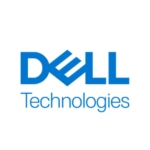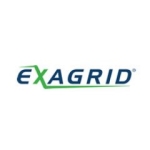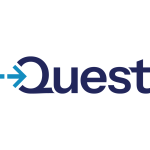What I like about Dell EMC PowerProtect DD (Data Domain) is that it is a performance technology.
One of the features I find very interesting in this product is deduplication.
I also find it valuable that it's very easy to communicate with just one vendor if you're using this product. Normally, with other security systems, CAP systems, etc., you have to use the server, some hardware, and some software. The server could be from one vendor, while the software could be from another vendor. When a problem arises, this means you have to communicate with more than one vendor, but with Dell EMC PowerProtect DD (Data Domain), this is not the case. The only competitor I know that manufactures a similar product with this feature of one vendor communication is Symantec.
Dell EMC PowerProtect DD (Data Domain) is not a product that's easy to install by customers. There are a lot of products, e.g. entry-level storages that can be easily installed by customers themselves, but this product and other IDPA solutions need to be installed by professionals.
Customers who buy Dell EMC PowerProtect DD (Data Domain) should not worry about its installation and deployment. It should be installed directly by Dell, or by a Dell partner for free, but the price of this product must include installation, so installation will no longer be a problem.
Installation and deployment for this product need to be improved. These processes need to become easier. The user interface could also be improved, but I did see that Dell now provides a number of products with very nice interface. We used to have Dell PowerEdge VRTX, but it reached its end-of-life (EOL). It was a small blade server with a small storage that's working, but it was equipped with a friendly interface for customer installation. Dell EMC and some other vendors should also sell entry-level to mid-range products that are more user-friendly, and make them out of the box products.
It's been a few years since we started selling Dell EMC PowerProtect DD (Data Domain). Normally, we sell Dell EMC backup systems, but we started to sell IDPA products last year, but the Data Domains we've started selling years ago. We're still working with this solution.
I find this solution stable.
Dell EMC PowerProtect DD (Data Domain) is a scalable product.
The installation of this product is not easy, though it's easier to install than IDP and DP units. If you have knowledge on this product, then installing it will be easy.
We deployed this solution in-house. We have two certified staff for data protection products. We have also have two certified staff for data storages, and more people certified for other products, e.g. desktops, servers, etc.
Buying Dell EMC PowerProtect DD (Data Domain), our clients don't have to pay for extra licenses. They can just buy any backup solution. For example, they can buy Dell EMC Avamar, or they can buy Symantec, Convault, etc.
When buying IDPA products, you don't have to buy anything, because you'll have an integrated solution: a data domain appliance plus software, the software being Dell EMC software which is a big package of software that allows you to do everything.
When buying Dell EMC PowerProtect DD (Data Domain), you can just buy a very cool backup software with deduplication, and that's all. It's very perfect, very nice. You can buy the backup software, e.g. Dell EMC, Convault, Symantec, etc.
Pricing for this product could still be improved, though several years ago, its price was very high. When there are more competitors, though, the price becomes more attractive both for the customer and partner. Now we can get more discounts for projects. The price for this product will decrease, because more and more companies now produce integrated devices, e.g. deduplication is not a very new technology, but it was a feature that was limited to several market leaders.
My company MiroMIX United is a Ukranian company, and we are the platinum partner of Dell EMC. The majority of our solutions are based on Dell EMC products. We sell HP servers, but not too many, just 5%. We sell Cisco equipment, but we prefer selling Dell EMC networking products. We're partners of Cisco Systems, but we try to sell more Dell EMC products, because we know Dell EMC products best.
We sell Dell EMC PowerProtect DD (Data Domain) which is an integrated data protection appliance (IDPA). We have not sold many, e.g. just 10 or 15.
Dell EMC PowerProtect DD (Data Domain) is a promising product. It's very competitive. Last year, this product was sold and utilized into the most powerful banks here in Ukraine, but not by my company. My company sold these products to departments and segments in the government, though we were able to sell several Data Domains to a bank, but it was not a project worth millions of dollars. Our competitors were able to sell this product for millions of dollars. It's a very interesting, promising, and competitive product.
This solution is very promising and competitive, and we would like to sell more, but it's difficult. We can't predict how it will fare against the competition, for example: HP. At the moment, we have a POC in one bank here in Ukraine. It is a Hungarian bank, an OTP Bank, but it has a branch here in Ukraine. In the near future, there will be an official tender procedure announcement, but at the moment, they are testing Dell EMC PowerProtect DD (Data Domain), while also testing the backup solution from HP. It would be very interesting to hear their conclusions, but at the moment, we don't have the results.
We have 15 clients who are using this solution. It would be great to expand our presence in this market. We have a service center certified by Dell, with 10 people working in it, and all of them are certified in various products, e.g. desktops, laptops, servers, data storages, and Dell EMC PowerProtect DD (Data Domain).
We've been working with Dell for many years. Our company was founded 22 years ago, and during this period, we've been working with service and warranty, and the independent service in Ukraine is based on four service centers for private companies, with one of the service center being ours. In previous years, e.g. in the early 2000s, we had to keep spare parts at our stock room. We used to do this, but 10 years ago, Dell changed the strategy of service in Ukraine and they arranged the spare parts hubs located in all the regional centers.
I recommend Dell EMC PowerProtect DD (Data Domain) to other users who want to start using it because it's a very interesting product.
My rating for Dell EMC PowerProtect DD (Data Domain) is a ten out of ten, when compared to its competitors which are utilized in large accounts.

















